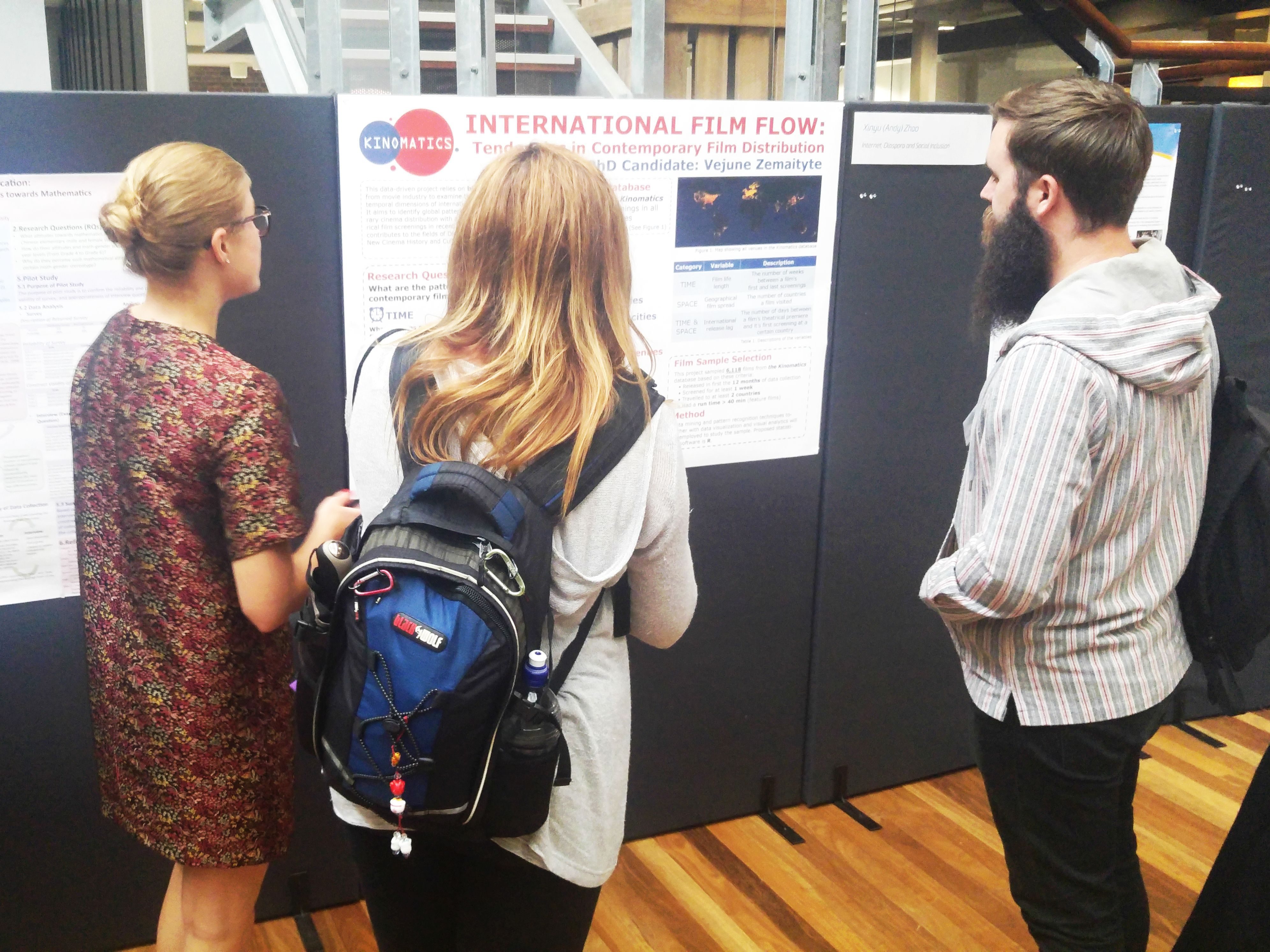Research Summer School
In February, 2016 Vejune Zemaityte delivered a poster presentation at Higher Degree by Research Summer School for the Faculty of Arts and Education held at Deakin University’s Geelong Waterfront campus. This presentation marked just over a year of her PhD study. Here June explains her poster in order to to walk you through her kinomatics research to date.
Firstly, my data-driven project is titled ‘International Film Flow: Tendencies in Contemporary Film Distribution.’ With this thesis I aim to identify the spatial and temporal dimensions of global movie dissemination relying on big data from the film industry. My topic and methodology are situated within the fields of Digital Humanities, New Cinema History and Cultural Economics.
My main research question is:
‘What are the patterns of global contemporary film distribution?’
In addition, my three main variables of interest are film life length (measured in weeks on screen), film geographical spread (measured in number of countries visited) and international release lag (measured in days to arrive at certain countries). I am addressing them through the following research sub-questions:
- ‘What patterns emerge when looking at film life length on an international scale?’
- ‘What patterns emerge when looking at film life length from country to country and do these patterns differ per location?’
- ‘What patterns emerge when looking at geographical film spread?’
- ‘What patterns emerge when looking at international release lags?’
The big data collection that I am using to answer my research questions comes from the Kinomatics database listing all film screenings in all cinema venues in 48 countries around the world over 2.5 years. This information was collected from 33,302 movie theatres that screened 96,970 films in 2012-2015, which totaled to 338,660,831 show times in the data set. For my analysis I sampled 6,118 movies that were released in the first 12 months of data collection, screened for at least one week, travelled to at least two countries and had a run time longer than 40 minutes.
The next stage of my project is performing data analysis on the film sample. I am proposing data mining and pattern identification as the main methods for my Exploratory Data Analysis (EDA). In addition, I am interested in data visualizations for not only illustrating the results but also analyzing the sample in a different way. I plan to use statistical software R to complete these tasks.
Presenting a poster proved to be a great way to not only showcase my work but also receive feedback. Below are my answers to three most common questions from the public.
- What is the significance of your research?
My research makes a contribution to both academia and industry. Firstly, I am working with the biggest dataset of film screening information that has been available to cinema researchers to date. Therefore, the identified tendencies in film distribution deriving from this data should be of interest to other academics. Moreover, as previous studies were conducted on smaller datasets, the methodology for working with the data of this scale has not been fully developed. Thus, the methods that I am constructing to work with big data on a humanitarian subject are adding to the methodological knowledge in the field as well. Secondly, most of the cinema industry players have not had the access to films screening data of this type and size either. Thus, my findings on current film distribution trends could also benefit the professionals in the movie industry.
- What other variables will possibly be included into this project?
I will analyze differences in film life length, geographical spread and release lags by comparing movies based on genre, rating, distribution company, movie length (variables present in the Kinomatics dataset) as well as country of origin and release timing (information outsourced from the Internet Movie Database (IMDb)).
- Where will you look for explanations of your results?
It is not only the inherited characteristics of movies (as those introduced in the previous question) but also the characteristics of screening locations that influence the life length, geographical spread and release lags of movies. Therefore, I would also like to analyze information on film screening countries such as population size, spoken languages, socioeconomic status, etc. to provide a full explanation of the trends to be identified from the data.


